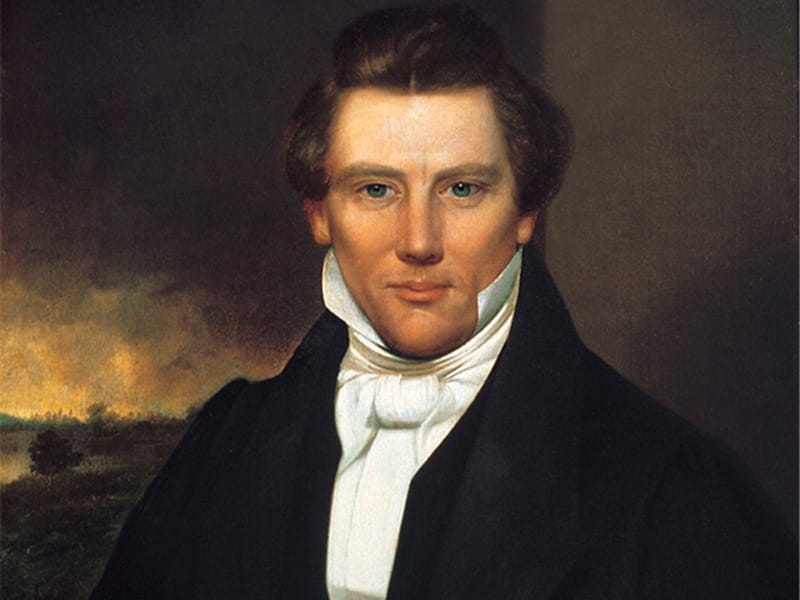Perhaps the first step is to recognize there are places where the religious and cultural rift takes a rest, where antagonism takes a back seat to neighborliness.
Many of those places are in rural Utah, where "gentiles" and backsliders keep their irritations to themselves. They may be mum because in their scarcity they know their place.
More likely, though, it is because country people cross paths morning and night, week after week. It's not us vs. them when everyone knows one another. "As long as you don't steal their water, you're fine," says Mary Elliott, who moved with her husband, Dudley, from Texas to heavily LDS southern Utah in 1985. "I see them accepting people left and right. If you're a good person, they just open their arms to you."
When the Elliotts and other Catholics were building St. Anthony of the Desert church in Torrey in the early 1990s, locals of all stripes lent a hand, says Dudley Elliott. "I could just go to town and grab people off the street and they didn't care."
The day the small mission church was consecrated, the mostly LDS crowd overflowed into the courtyard.
These days, a quilting group made up mostly of LDS women, the High Country Quilters, meets monthly at the Catholic church. "It's just a nice little place," says Phyllis Coombs of Teasdale, one of the Mormon quilters.
Just as Mormons must learn not to ask job interviewees or neighbors or customers their religion or ward affiliation--"They don't even seem to know they shouldn't be asking those questions," says Carole Einhorn of Jewish Community Services in Salt Lake City--non-Mormons must develop a thicker skin.
Bruce Smith, publisher of The Herald Journal in Cache Valley, where the divide is apparent in battles over restaurant liquor licenses and brew pubs, is often stunned by the insensitivity of fellow Mormons. They chat about mission calls and conference talks at football games and dinner parties, as if everyone around is LDS, he says.
At the same time, he says, some non-Mormons "get their noses bent out of joint" for no reason.
His paper makes a point of providing more news coverage to other religions. While 85 percent of the Logan paper's readers are LDS, about 40 percent of the religion news is about other faiths.
Monsignor Robert Bussen, former vicar general of the Roman Catholic Diocese of Salt Lake City, has always seen the divide as more about majority vs. minority than religion. Not only do Mormons dominate the Legislature, judicial benches, school boards, teacher ranks, PTA and city councils, LDS neighbors spend a good deal of their social time at the ward house.
"If you were always left out of the power in everything important, you would feel frustrated," says Bussen, now pastor at St. Mary of the Assumption in Park City.
That essentially was the message shared by 20 LDS and four Catholic teen-agers, meeting on Thanksgiving weekend to talk about everything from chastity to hypocrisy to how non-Mormon kids feel in Utah. Scott Heiner, an LDS bishop in South Ogden, and Christine Larrinaga, a Catholic youth minister in Bountiful, thought the gathering would be good for the kids.
"There's an increasing emphasis that we're not the only ones here," says Heiner.
Whether in city or suburb, country or small town, there are people demonstrating ways to bridge the divide. For years, Christine Balderas, a Mormon, and Teresa Smith, a Catholic, have been working for unity in the Mill Creek neighborhood of Salt Lake City.
When Smith's husband died, three of four funeral speakers were LDS and the Mormon Relief Society put on the dinner. The LDS stake president, bishop, priesthood leaders and Primary president all skipped their church meetings to attend Smith's son's first Communion.
Conversely, Smith gives good-natured advice to all the Mormon boys leaving on missions and even sends them money. Her sons participated in youth activities, including Scouting, with their LDS neighbors.
The Mormons work hard to restrain their natural impulse towards proselytizing; the non-Mormons learn to "brush off insensitive remarks," Balderas says. "If you have genuine friendship, you can get over the little buggy things."

